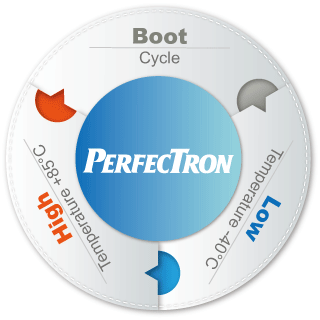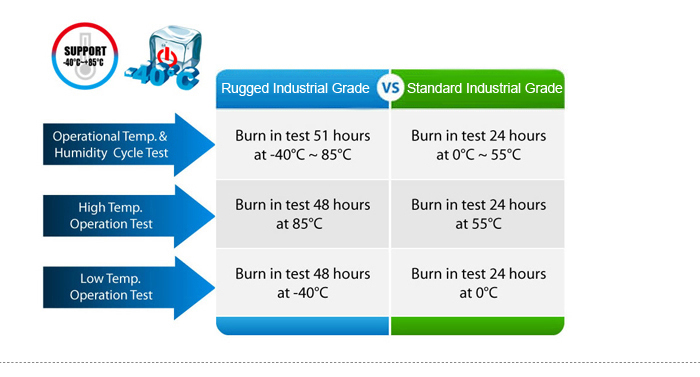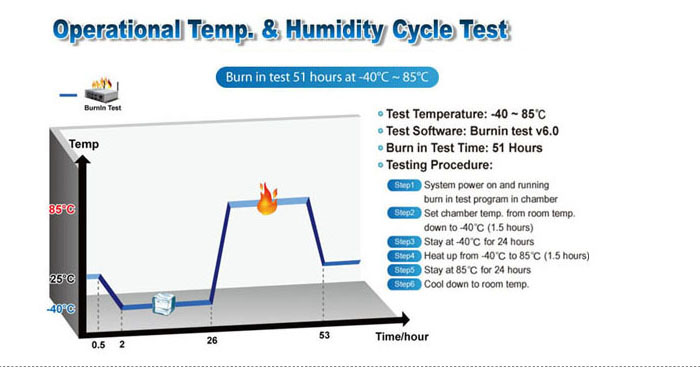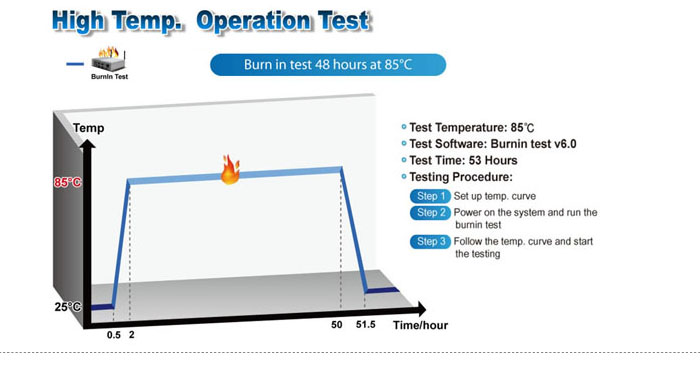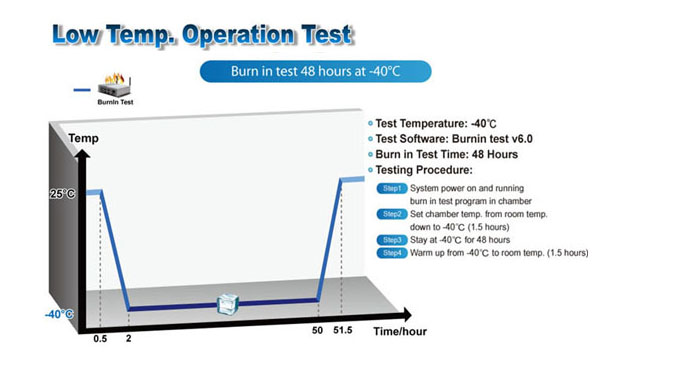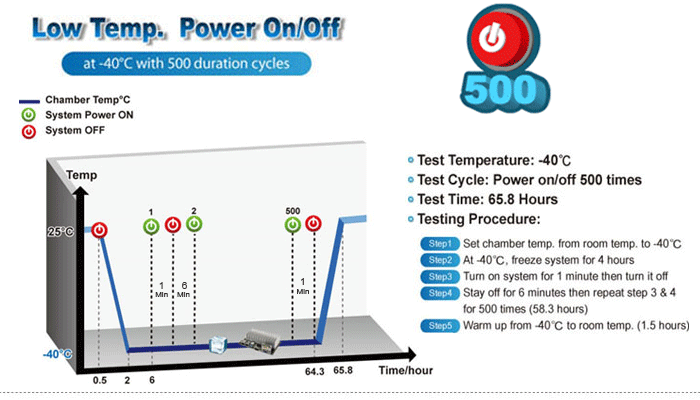Extended-Temp. Principle
Commercial outdoor and vehicle industries employ a wide variety of industrial applications designed to operate in extreme conditions and temperatures, thermal shock, high humidity and electromagnetic disturbances and low temperature start-ups. Since the applications typically operate in difficult environments and under all weather conditions, reliable systems face severe technical challenges. Furthermore, system failures often result in higher cost considerations. Due to the extreme demand on these systems, reliability under every possible operating condition and at the highest level of failure tolerance is paramount.
Apart from translating your concepts into highly marketable products, PERFECTRON delivers quality solutions that meet industry standards. We guarantee that our products are made in accordance with your requirements on wide temperature range, compact design, durability, high performance and extended lifecycle. To do this, we implement a design principle that uses wide temperature grade components, optimal power circuits, constructed cooling & thermal design, and wideband extended temperature testing.
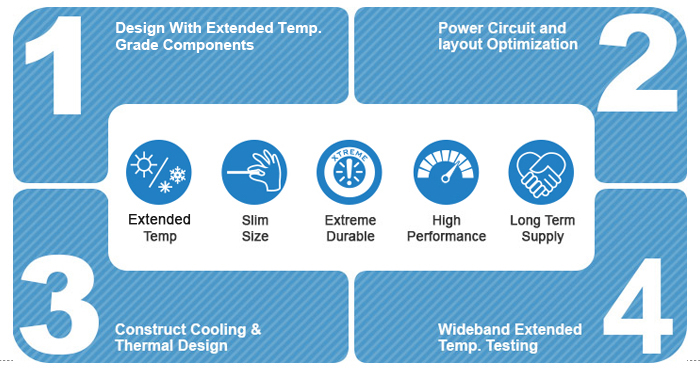
- 1. Design with Extended Temp Grade Components
-
Every component is crucial to the overall performance and reliability of a product over extended periods. To ensure customer satisfaction, PERFECTRON uses only industrial grade components that pass strict standards on vendor selection, extended temperature operation, ruggedness specification, reliability and durability. As part of our quality control measures, we maintain a database of wide temp grade components such as CPUs, chipsets, clock generators, super IO and power supplies.
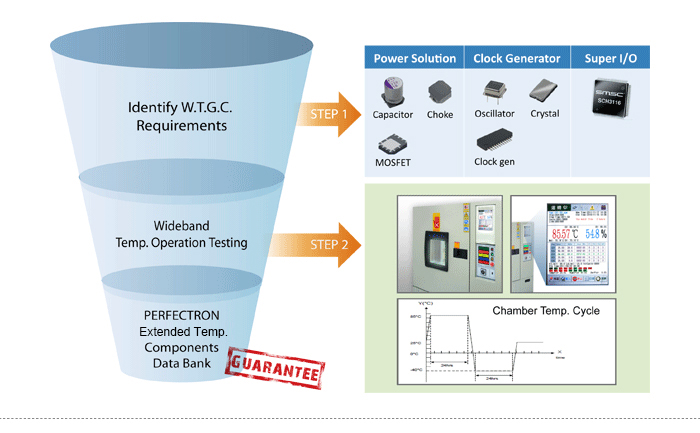
- 2. Power Circuit and Layout Optimization
-
Control of heat generation and heat flow are of primary importance in protecting the PCB and its components. To accomplish this goal, the PCB, heat spreader, and case are be viewed as a single thermal system. The PCB's metal layers are designed to conduct heat in a controlled manner from one part of the PCB to another. Using materials that have a high glass transition temperature (Tg) ensures the PCB and its components will not get damaged under high-heat conditions.
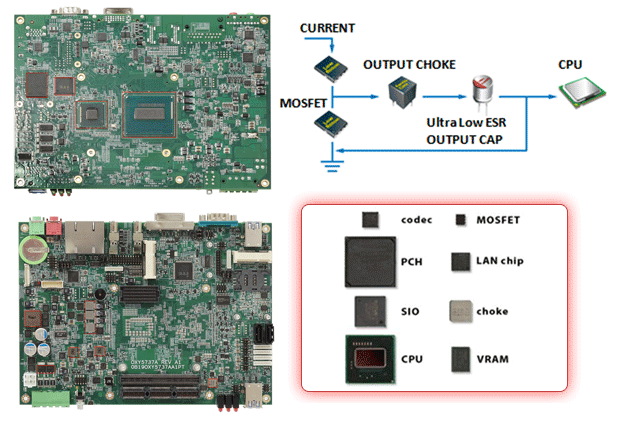
Component choice and placement
Designing a Extended-temperature embedded computer requires a full understanding of the product's thermal gradient in order to optimize the placement of components. The following factors need to be considered with regards to the thermal placement of components inside the computer.
- Identifying the main heat sources and hot spots so layout designers can determine the best component placement on the motherboard.
- Determining the amount of heat generated by the chassis type and the total system power consumption.
- Determining the primary direction of heat transmission in order to dispel the heat via a specific transfer route.
- Determine how the PCB design handles normal to heavy power loads.
- Determine how the PCB design provides better overclocking capability.
- 3. High Efficiency Copper Heat-Pipe
-
Heat pipes are the most common passive, capillary-driven of the two-phase systems. Two-phase heat transfer involves the liquid-vapor phase change of a working fluid. Heat pipes have an extremely effective high thermal conductivity.

- 4. Wideband Extended Temperature Testing
-
PERFECTRON complies with the IEC 60068 (Environmental Testing) standard, which ensures optimum product performance and reliability under the rigors of varying environmental conditions. This wideband extended temperature testing, from as low as -40°C to as high as +85°C, evaluates both component and system performance effectively, through dynamic temperature burn-in cycles. This high standard delivers reliability without degradation of performance or function loss. Mission-critical applications thus stay stable even under harsh environments through PERFECTRON efficient thermal solutions.
